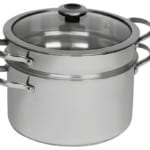What Is Coffee Itself?

Although everyone recognizes a roasted coffee bean…
…not everyone identifies a coffee plant. Coffee trees are cut short to save energy…
…and facilitate harvesting, but they can reach heights…
…of more than 30 feet (9 meters). One tree has green, waxy leaves…
…that grow in pairs opposite each other. Along the branches, coffee cherries grow.
It’s not uncommon to see flowers, green fruit, and ripe fruit on the same tree…
…because it grows in a continuous cycle. After flowering, a cherry takes…
….approximately a year to mature, and about 5 years of growth to reach…
…maximum fruit output. Coffee plants can live up to 100 years…
…but between the ages of 7 and 20, they are at their most productive.
Depending on the variety, proper maintenance can help them maintain…
…or even grow their yield over time. The average coffee tree yields 10 pounds…
…of coffee cherries or 2 pounds of green beans per year. The Coffee Belt…
…is a region of the world where all commercially cultivated coffee is grown.
Rich soil, warm temperatures, frequent rain, and sheltered sun…
…are ideal growing conditions for the trees.
Here’s the thing!
Etymology
The Dutch word koffie was borrowed from the Ottoman Turkish kahve…
… which was borrowed from the Arabic qahwah, and…
…entered the English language in 1582. The Arabic word qahwah…
…has long been thought to refer to a type of wine whose etymology…
…is attributed to the verb qahiya, which means ‘to lack hunger,’ in reference…
…to the drink’s reputation as an appetite suppressant. The term “coffee pot”…
…was coined in 1705. In 1952, the phrase “coffee break” was first used.
Let’s dive in more deeper…
Botanical Classification
The origins of coffee can be traced back to the Coffea genus of plants.
There are over 500 genera and 6,000 species of tropical trees…
…and shrubs in the genus. Coffee plants are estimated to have between…
….25 and 100 species, according to experts. Carolus Linneaus, a Swedish botanist…
…who also described Coffea Arabica in his Species Plantarum in 1753…
….was the first to describe the genus in the 18th century. Since coffee plants..
….can range widely, botanists have disagreed on the exact classification ever since.
They can range in size from small shrubs to tall trees, with leaves ranging…
…in size from one to sixteen inches in diameter and colors ranging…
…from purple to yellow to the dominant dark green. Arabica and Robusta….
….are the two most important coffee species in the commercial coffee industry.

Coffea Arabica C. Arabica
Bourbon, Typica, Caturra, Mundo Novo, Tico, San Ramon, Jamaican…
…are some of the varieties available. Blue Mountain is a mountain…
…in the United States. The original coffee trees were discovered in Ethiopia
….and Coffea Arabica is a descendant of them. These plants produce a fine…
…mellow, aromatic coffee that accounts for almost 70%…
….of global coffee production. The beans are flatter…
….and longer than Robusta, and they contain less caffeine.
Arabica coffees command the highest prices on the global market.
The best Arabicas are high-altitude coffees grown between 2,000 and 6,000 feet…
…(610 to 1830 meters) above sea level, while the ideal height varies…
…depending on closeness to the equator. The most crucial criterion…
…is that temperatures be warm, ideally between 59 and 75 degrees Fahrenheit…
….with about 60 inches of precipitation per year. Although the trees are hardy…
…they will succumb to a severe frost. Arabica trees are expensive to grow since…
…the optimum location is steep and difficult to access. The trees also require…
…more care and attention than Robusta because they are more disease-prone.

Keep reading…
Coffea canephora — C. canephora var. Robusta
Robusta is mostly grown in Central and Western Africa, as well as regions…
…of Southeast Asia, such as Indonesia and Vietnam, and Brazil. Robusta production…
…is expanding, despite the fact that it only accounts for roughly 30% of the global market.
Robusta is most commonly used in coffee blends and instant coffees.
The Robusta bean is slightly rounder and smaller in size than the Arabica bean.
The Robusta tree is more hardy and resistant to disease and pests…
..making it easier and less expensive to grow. It can also endure warmer climes…
…requiring continuous temperatures between 75 and 85 degrees Fahrenheit…
…allowing it to thrive at much lower altitudes than Arabica.
It requires about 60 inches of rain per year and is susceptible to frost.
Robusta beans make a coffee that has a distinct flavor and contains 50-60%…
…more caffeine than Arabica beans.

This is the interesting part…
9 Reasons, Why Coffee Is Good for You
Nutrition and Food Diagnosis and Screening for Gynecologic Conditions…
…in Women Fitness and Nutrition Coffee, oh coffee. It’s difficult to imagine…
…a day without it, whether you’re cradling a travel mug on your way to work…
…or racing out after spin class to recharge with a skinny latte. Caffeine energizes you…
…and there’s something calming about sipping a steamy cup of joe.
Is it, nevertheless, healthy to consume coffee?
The good news is that the case for coffee is more compelling than ever.
According to numerous studies, you may be getting more out of your favorite…
…morning beverage than you thought: Coffee is high in compounds that…
….may protect against illnesses that are more common in women…
…such as Alzheimer’s disease and heart disease.
Caffeine is the first thing that comes to mind when you think about coffee. But coffee also contains antioxidants and other active substances that may reduce internal inflammation and protect against disease.”
Diane Vizthum, M.S., R.D., research nutritionist for Johns Hopkins University School of Medicine.

Go on….
What Are The Top Health Benefits of Drinking Coffee?
You Might Be Able To Live Longer.
According to recent studies, coffee drinkers are less likely to die..
…from coronary heart disease, stroke, diabetes, and kidney disease…
…which are among the major causes of death in women.
Your Body May Be Able To Process Glucose More Efficiently.
Studies have indicated that persons who drink more coffee had a lower risk..
…of developing type 2 diabetes.
You Have A Lower Risk of Developing Heart Failure.
One to two cups of coffee a day may help prevent heart failure, which occurs…
…when the heart is weakened and cannot pump enough blood to the body.
Parkinson’s Disease Is Less Likely To Target You.
Caffeine is associated to a lower risk of Parkinson’s disease, as well…
…as the ability to better control movement in individuals who already have it.
Your Liver Will Be Grateful.
Coffee, both regular and decaf, appears to have a liver-protective impact.
Coffee consumers are more likely than non-coffee drinkers…
…to have liver enzyme levels that are within a healthy range, according to research.
Keep going…
Your DNA Will Be More Powerful.
Dark roast coffee reduces DNA strand breakage, which occurs naturally…
…but can lead to cancer or tumors if your cells do not repair it.
Your Chances of Developing Colon Cancer Will Significantly Decrease.
Colon cancer affects one out of every 23 women. However, coffee consumers…
…whether decaf or regular, were shown to be…
..26% less likely to get colorectal cancer.
You Might Be Able To Lower Your Chances Of Developing Alzheimer’s Disease.
Women represent nearly two-thirds of Alzheimer’s disease patients…
…in the United States. However, the caffeine in two cups of coffee…
…may offer significant protection against the disease.
In fact, researchers discovered that women over the age…
…of 65 who drank two to three cups of coffee per day had a lower risk..
…of dementia in general.
You Have A Lower Chance Of Having A Stroke.
Women who drink at least one cup of coffee per day have a lower risk of stroke…
…which is the fourth leading cause of death in women.
Don’t hesitate to read!
Our Articles About Coffee!
The Best Tips for Picking Coffee Beans for Espresso
Coffee technology has advanced considerably since the first espresso…
…was served over a century ago. Choosing the perfect coffee beans for espresso…
…has never been more difficult, even if brewing at home has never been easier.
We’ll show you how to pick the best espresso beans for your likes and preferences…
…so you can be sure of every shot! Start picking your best beans…
…after reading this article!
Is There A Difference Between Espresso And Coffee Bean?
I noticed some bags were labeled while others had the term espresso beans…
…on them when I went to buy coffee at the local grocery store. After reading this…
….I’m curious if there’s a distinction between coffee beans and espresso beans.
After that, I did a thorough investigation. So, how do you tell the difference…
…between coffee and espresso beans?
Last but not least…
Best Cheap Coffee Brands That You Can Buy!
Finding great coffee on a budget can be difficult. There are hundreds…
… if not thousands, of coffee brands, such as Tim Hortons, Starbucks…
…and Dunkin’ Donuts, in addition to the various types of coffee.
When it comes to price and flavor, these are the finest of the best.
We hope you’ll discover a wonderful coffee brand on this list…
…that won’t break the bank, regardless of your budget.
As soon as you’ve finished reading, start brewing!
More Coffee Articles For You!
Was this helpful?
Hi there! I’m a food enthusiast and journalist, and I have a real passion for food that goes beyond the kitchen. I love my dream job and I’m lucky enough to be able to share my knowledge with readers of several large media outlets. My specialty is writing engaging food-related content, and I take pride in being able to connect with my audience. I’m known for my creativity in the kitchen, and I’m confident that I can be the perfect guide for anyone looking to take their culinary journey to the next level.








